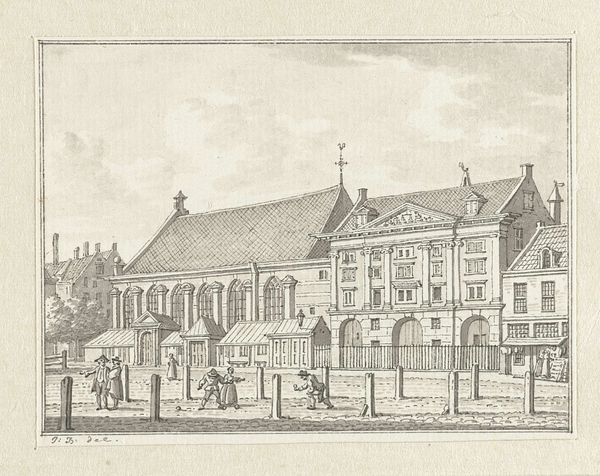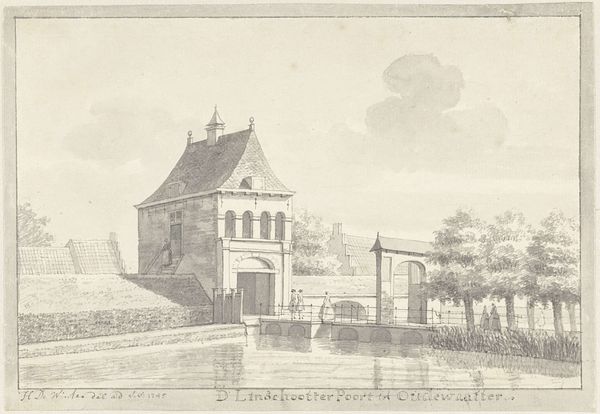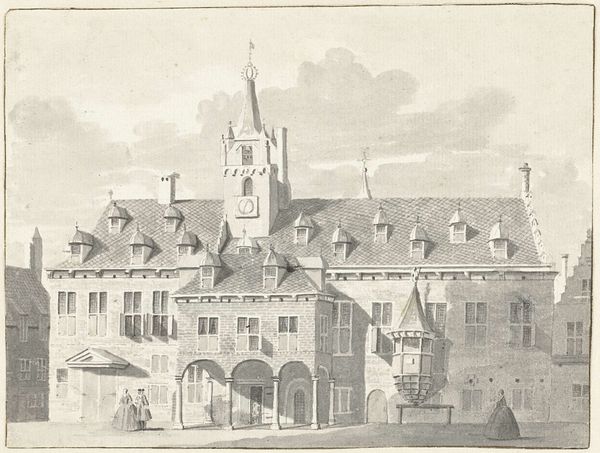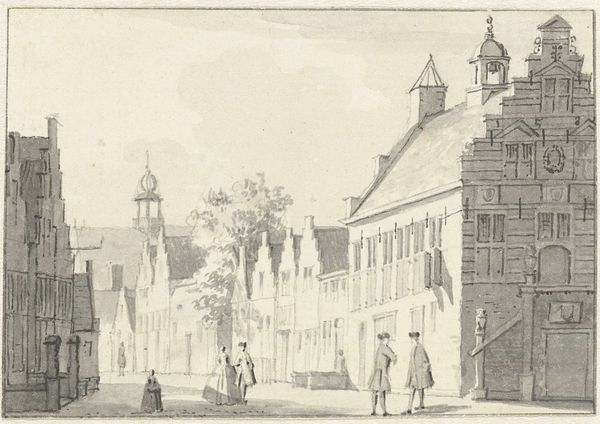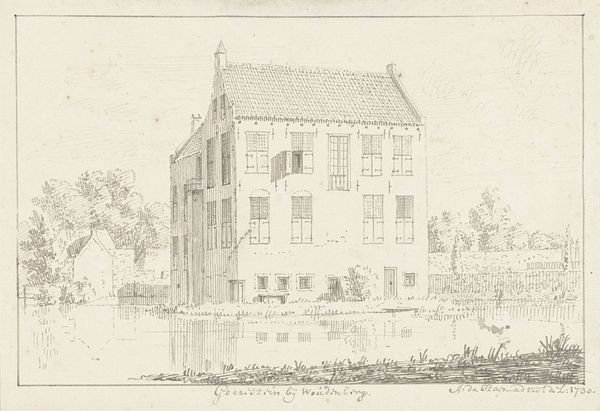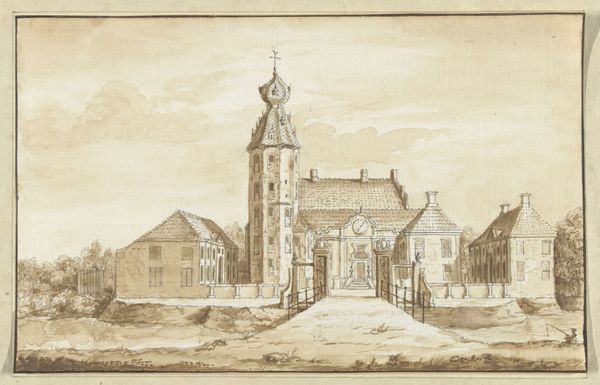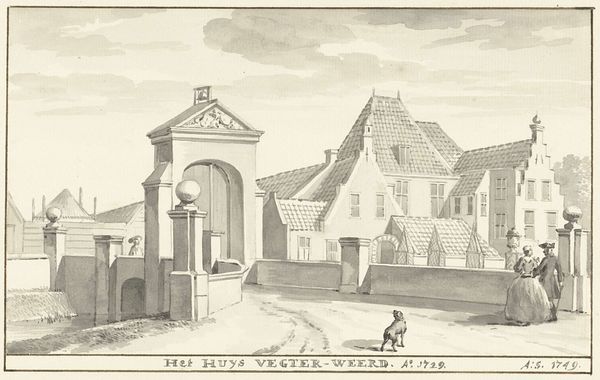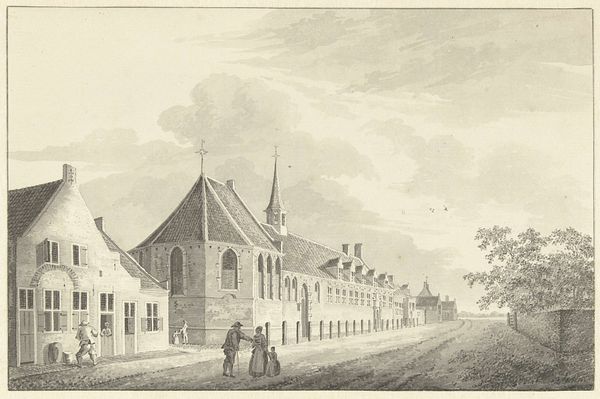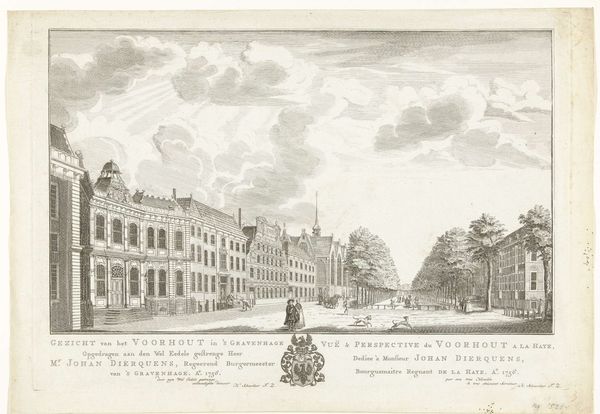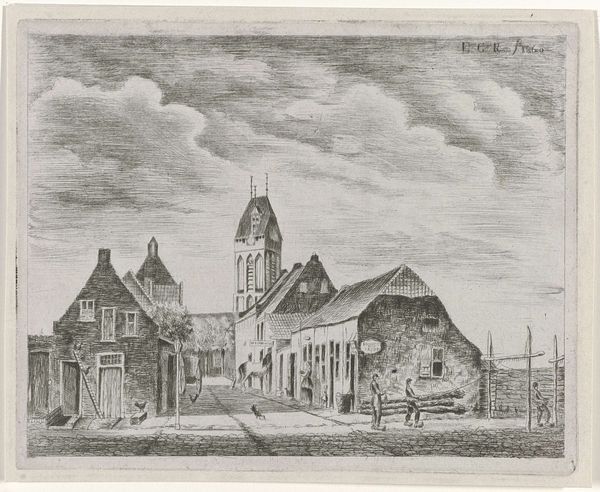
drawing, paper, ink, architecture
#
architectural sketch
#
drawing
#
aged paper
#
dutch-golden-age
#
parchment
#
old engraving style
#
sketch book
#
paper
#
personal sketchbook
#
ink
#
sketchwork
#
pen-ink sketch
#
pen work
#
genre-painting
#
storyboard and sketchbook work
#
architecture
#
realism
Dimensions: height 120 mm, width 135 mm
Copyright: Rijks Museum: Open Domain
"De Nieuwe Hal," or "The New Hall," was rendered in pen and brown ink by Abraham de Haen the Younger sometime in the first half of the 18th century. De Haen, who came from a family of artists, situates us here in the heart of Dutch commerce, a place bustling with trade and civic life. Notice the two women occupying the lower right of the image. Their inclusion amidst this commercial scene offers a glimpse into the gendered dimensions of labor and public space in 18th-century Dutch society, suggesting questions about women's roles in the economic life. De Haen's choice to depict "De Nieuwe Hal" reflects the growing urbanization and economic expansion of the Dutch Golden Age, where these structures were more than just places of trade, but also symbols of civic pride and collective identity. The drawing serves as a reminder of the stories embedded within the architecture that shape our understanding of the past.
Comments
No comments
Be the first to comment and join the conversation on the ultimate creative platform.
